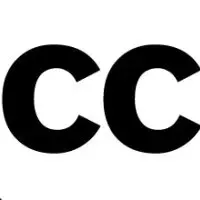Creative Commons
Written by

Once upon a time copyrights were controlled by monasteries, patrons and guilds, until the English Statute of Anne in 1710. Considered to be the first modern copyright law it gave legal rights to authors to protect their work, with protection also extended to consumers. Rights were limited to a period of 28 years after which all works passed into the public domain.
Once upon a time copyrights were controlled by monasteries, patrons and guilds, until the English Statute of Anne in 1710. Considered to be the first modern copyright law it gave legal rights to authors to protect their work, with protection also extended to consumers. Rights were limited to a period of 28 years after which all works passed into the public domain. Nearly exactly three hundred years later and the internet has introduced both issues and opportunities for artists willing to manage their own creativity.
Artists across the world are taking their careers into their own hands, opting out of the 'All Rights Reserved' way of thinking, and publishing under Creative Commons (CC) licenses, to encourage mashups and remixes of their work.
Creative Commons is a non-profit making organisation founded in 2001, to provide an alternative copyright system for artists in the digital millennium. On the Wikipedia entry on Creative Commons their focus is stated as 'Expansion of "reasonable", flexible copyright'. The Creative Commons Information Flyer (pdf) explains that CC Licenses are not an alternative to copyright. 'They apply on top of copyright, so you can modify your copyright terms to best suit your needs'. The end result is clearly defined terms of how a work is to be used, and a growing pool of legally remixable and mashable content.
First you need to choose what licensing conditions you want to apply to your work. There are various levels of sharing from simple Attribution (BY), to Attribution - Share Alike (BY-SA), Attribution - No Derivatives (BY-ND), Attribution - Non Commercial (BY-NC), Atribution - Non Commercial - Share Alike (BY-NC-SA), and Attribution - Non Commercial - No Derivatives (BY-NC-ND).
Kiwi artists can find more information at Creative Commons Aotearoa which has provided NZ CC Licenses since 2007 under the auspices of Te Wh?inga Aronui The Council for the Humanities. They clearly explain the different CC licenses available and have a map of all the 'creative commoners ' using CC licenses in New Zealand. You can also search the international CC database for works you can 'modify, adapt or build on', and 'Wanna Work Together?' is a series of videos to watch explaining how Creative Commons works.
The list of works available under a Creative Commons License on Wikpedia includes "Broadcasting footage of Al Jazeera, The fiction of Cory Doctorow, MIT OpenCourseWare, and Ghosts I-IV - The sixth studio album by Nine Inch Nails, which was published under an Attribution-NonCommercial-ShareAlike
(BY-NC-SA) license upon its release, thus raising considerable media attention." In Aotearoa, Radio New Zealand, National has released their daily online programme schedule under a Creative Commons (BY-ND)
3.0 New Zealand Licence. Members of the Sugarlicks Records family have also been working hard over the last few months with the British Council New Zealand, on one of their main events for 2009, called "People In Your Neighbourhood."
This project involves aspiring artists and performers from Auckland’s ethnic communities, working with the best of contemporary UK talent, to create a CC licensed album and perform a live street-style fashion show. The album itself has been recorded as a creative commons project, and you can download the full album from Last FM & iTunes. Other places to find CC Licensed content are Legal Torrents.com for Film Music & Digital Media. Jamendo has a huge database of music which is free, legal and unlimited. I love Cherry Peel for finding new, legal music and Behold is a great source of Creative Commons Licensed pictures on Flickr.
I'm really excted by the new wave of Creative Commons licensed media adding to the rich cultural tradition of the public domain. This new system allows art to roam freely through cyberspace and find its natural form through collaboration. Culture is about being inspired, borrowing and remixing. I think giving permission to watch your work grow can only be a good thing.